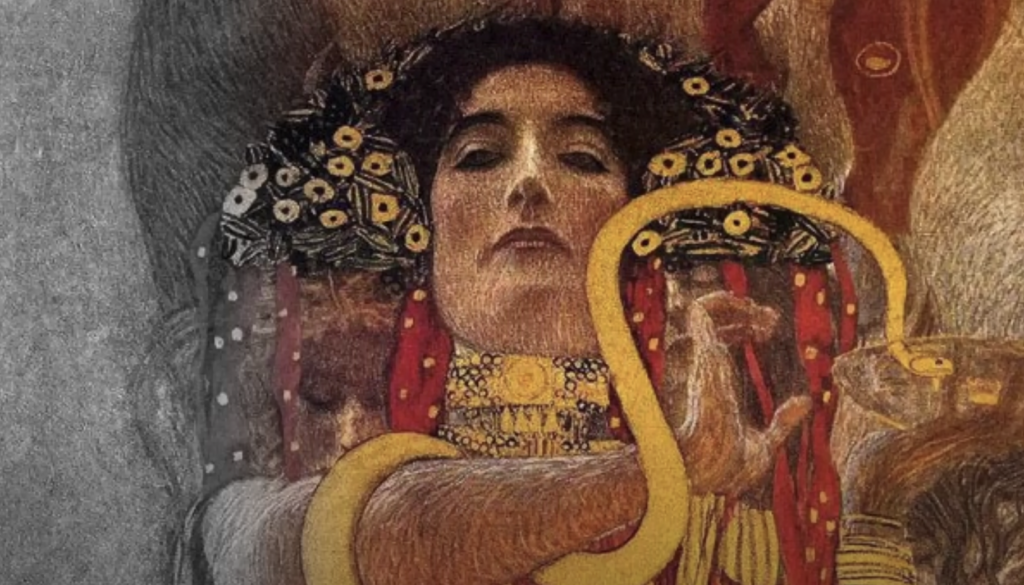How the Avant-Garde Art of Gustav Klimt Got Perversely Appropriated by the Nazis

On paper, the Nazis shouldn’t have liked Gustav Klimt. As gallerist and Youtuber James Payne says in his new Great Art Explained video above, their denunciatory “Degenerate Art Exhibition” of 1937 included the work of “Paul Klee, Otto Dix, Pablo Picasso, Marc Chagall, and Piet Mondrian, as well as Egon Schiele and Oskar Kokoschka” — but somehow not Klimt, “who, at one time or another, had been described as morally questionable, obscene, or even pornographic, and was friends with Jewish patrons, intellectuals, and artists.” And it isn’t as if the Nazis just ignored his work; in fact, they actively pressed a few of his paintings into the service of their ideology.
The search for those paintings, and thus an answer to the question of how they could have been given a pro-Nazi spin, takes Payne to Vienna (this video being part of his Great Art Cities sub-series). It was there that the 22-year-old Klimt — along with his brother Ernst and their friend Franz Mach — received the career-making commission, straight from the emperor himself, to paint a series of ten historical murals on the ceilings and walls of the city’s storied Burgtheater. This made possible Klimt and Mach’s next major mural project for the University of Vienna, though the former’s contributions were rejected by the officials, and later deliberately destroyed by German forces retreating at the war’s end.
Having died in 1918, Klimt never learned of his work’s ultimate fate (much less its more recent reconstruction with artificial intelligence). Even by the time the Nazis rose to power, he’d been dead long enough for them to appropriate his art, and even the much more daring art he made after the University of Vienna debacle. Take his Beethoven Frieze from 1902, a “34-meter-long homage to Beethoven’s Ninth Symphony as interpreted by Richard Wagner: Hitler’s favorite piece of music, often played at Nazi rallies, interpreted by his favorite composer.” That Klimt “celebrates the triumph of idealism over materialism” seems to have represented enough of a philosophical overlap to be useful to the Third Reich.
“In 1943, in Vienna, the Nazis even sponsored the largest-ever retrospective of Klimt’s art.” Indeed, Payne identifies “a Teutonic quality to Klimt’s work that would have appealed to the Nazi aesthetic.” But he could also be portrayed as “part of the Austrian folk tradition” with “German philosophical roots,” and like conventional Nazi artists, Klimt made much use of classical icons and nude bodies. Yet there is little in his life or worldview of which the Nazis could possibly have approved, and even his work itself suggests that he knew full well the dangers of popular appeal. “If you cannot please everyone with your actions and art, you should satisfy a few,” says the quotation from the poet and philosopher Friedrich Schiller incorporated into Klimt’s 1899 painting Nuda Veritas. “To please many is dangerous.”
Related content:
The Nazis’ Philistine Grudge Against Abstract Art and The “Degenerate Art Exhibition” of 1937
Gustav Klimt’s Masterpieces Destroyed During World War II Get Recreated with Artificial Intelligence
Based in Seoul, Colin Marshall writes and broadcasts on cities, language, and culture. His projects include the Substack newsletter Books on Cities, the book The Stateless City: a Walk through 21st-Century Los Angeles and the video series The City in Cinema. Follow him on Twitter at @colinmarshall or on Facebook.


